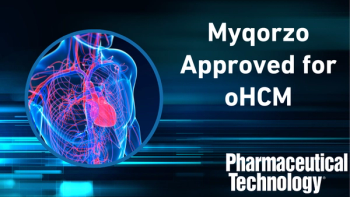
PTSM: Pharmaceutical Technology Sourcing and Management
- PTSM: Pharmaceutical Technology Sourcing and Management-09-03-2008
- Volume 4
- Issue 9
Setting a Regulatory Framework for Nanotechnology
The US Food and Drug Administration will hold a public meeting this month to gain public input on implementing the recommendations of the Nanotechnology Task Force report, taking another step closer to setting a regulatory framework for nanotechnology for pharmaceuticals and medical devices.
The US Food and Drug Administration is holding a public meeting on Sept. 8, 2008, to gather information that will assist the agency in implementing the recommendations of the Nanotechnology Task Force Report. The FDA's Task Force Report on Nanotechnology addresses regulatory and scientific issues and recommended FDA consider development of nanotechnology-associated guidances for manufacturers and researchers. FDA Commissioner Andrew von Eschenbach initiated the task force in 2006. FDA is also part of the National Nanotechnology Initiative, a federal research and development program established to coordinate the multiagency efforts of 23 federal agencies in nanoscale science, engineering, and technology.
FDA’s Nanotechnology Task Force issued its initial recommendations in July 2007. In its report, FDA explained that nanoscale materials often have chemical, physical, or biological properties that are different from those of their larger counterparts. These differences may include altered magnetic properties, altered electrical or optical activity, increased structural integrity, or altered chemical or biological activity. Because of some of their special properties, nanoscale materials may pose different safety issues than their larger or smaller (i.e., molecular) counterparts (1).
In its report, the task force did not provide a definition for nanotechnology, but rather stated: “While one definition for nanotechnology, ‘nanoscale material,’ or a related term or concept may offer meaningful guidance in one context, that definition may be too narrow or broad to be of use in another.” The task force does not recommend adopting formal, fixed definitions for nanotechnology, although it left the door open to revisit the matter later. “As FDA learns more about the interaction of nanoscale materials with biological systems and generalizable concepts that can inform the agency's judgment, it may be productive to develop formal, fixed definitions, appropriately tailored to the regulation of nanoscale materials in FDA-regulated products.”
At its public meeting this month, FDA will examine five key issues relating to prescription and over-the-counter drugs (2):
• Are there general parameters or screening tools by which to evaluate the likelihood that a particular material might have nanoscale-specific properties and to decide when and what sort of further evaluation might be warranted? Are there characteristics and properties of materials that FDA can use to broadly categorize materials with respect to their likelihood of having nanoscale-specific properties warranting further review?
• What are the unique manufacturing features of products containing nanoscale materials and how should these be evaluated?
• What are unique physicochemical attributes of products containing nanoscale materials?
• What has been your experience to date with products containing nanoscale materials and/or have you avoided these products due to concerns about development, characterization, and manufacturing?
• What additional questions focusing on characterization and manufacturing aspects of products containing nanoscale materials should be addressed in this forum or brought to the attention of FDA's Center for Drug Evaluation and Research?
In terms of manufacturing, FDA is interested in gaining input on whether the manufacturing process understanding and development for nanoscale materials is different from that of conventional drugs. It also wants to examine whether the use of nanoscale materials affects scale-up, and whether developing a nanoscale material-containing product under the quality by design model contributes to process understanding and manufacturing capabilities. FDA is also interested in evaluating whether nanoscale materials affect product formulation, components, excipients, and processing. The agency is also evaluating how the physicochemical properties of nanomaterials affect controls, standards, specifications, product performance, and whether these properties complicate development and manufacturing of these products.
FDA hopes that the public meeting will assist the agency in its goal of developing guidances relating to nanotechnology. FDA is also working with the National Institutes of Health (particularly the NanoHealth Enterprise) to explore methods for receiving and sharing data on general product development, including research on failed product candidates, and biological interactions of certain characteristics of nanoscale materials. FDA hopes that such a data repository could allow the agency and other stakeholders to share data and methods, and to develop models of biological interaction that could provide information for product development and review.
References
1. FDA, “Nanotechnology: A Report of the US Food and Drug Administration Nanotechnology Task Force” (Rockville, MD, July 2007), available at
2. FDA, “Product-Specific Questions to be Discussed at
Nanotechnology Public Meeting” (Rockville, MD, 2008), available at
Articles in this issue
over 17 years ago
Clinical Outsourcing Steams Aheadover 17 years ago
Advances in Green Chemistry for Pharmaceutical ApplicationsNewsletter
Get the essential updates shaping the future of pharma manufacturing and compliance—subscribe today to Pharmaceutical Technology and never miss a breakthrough.




